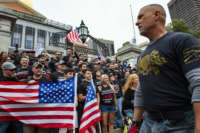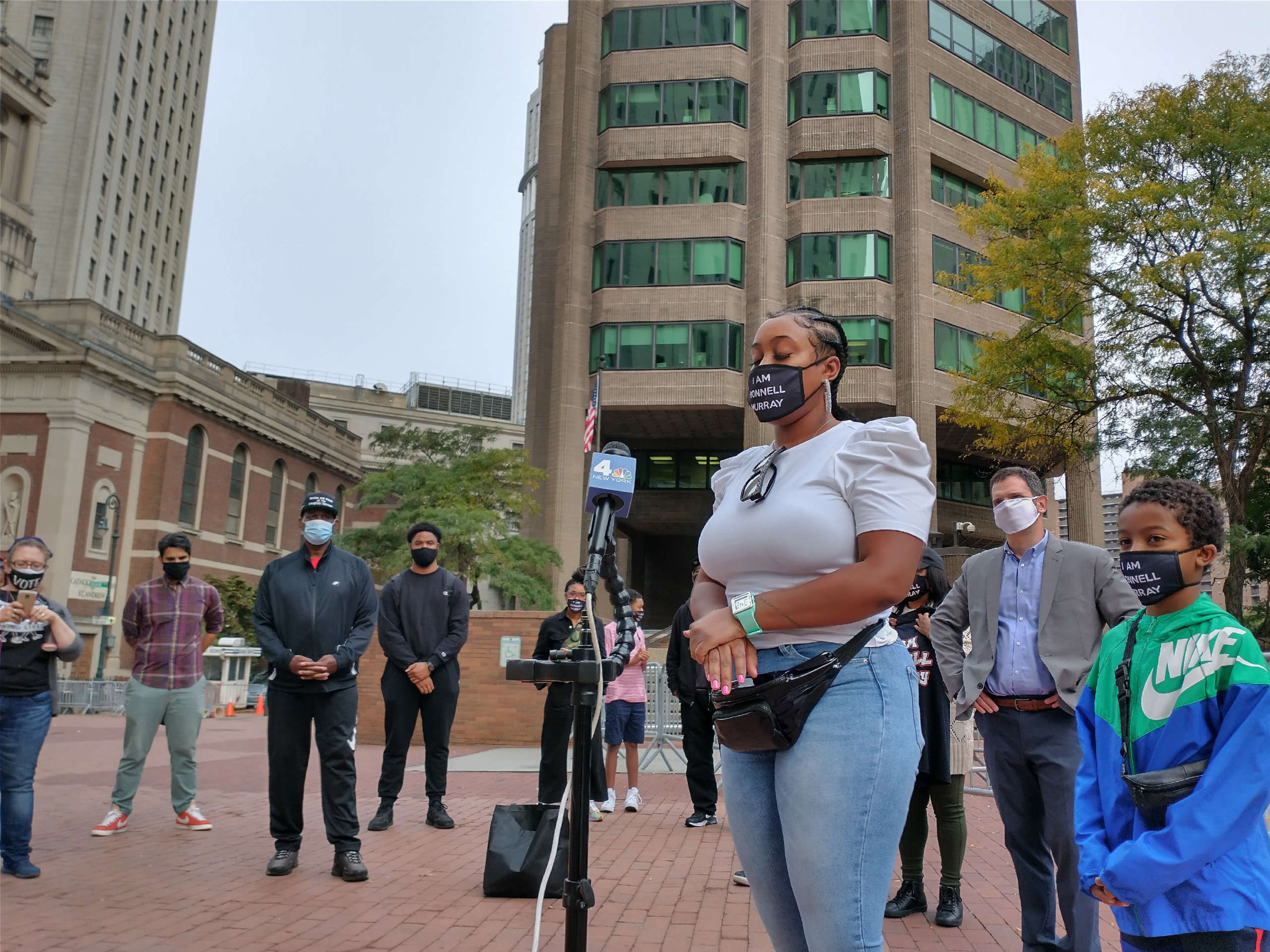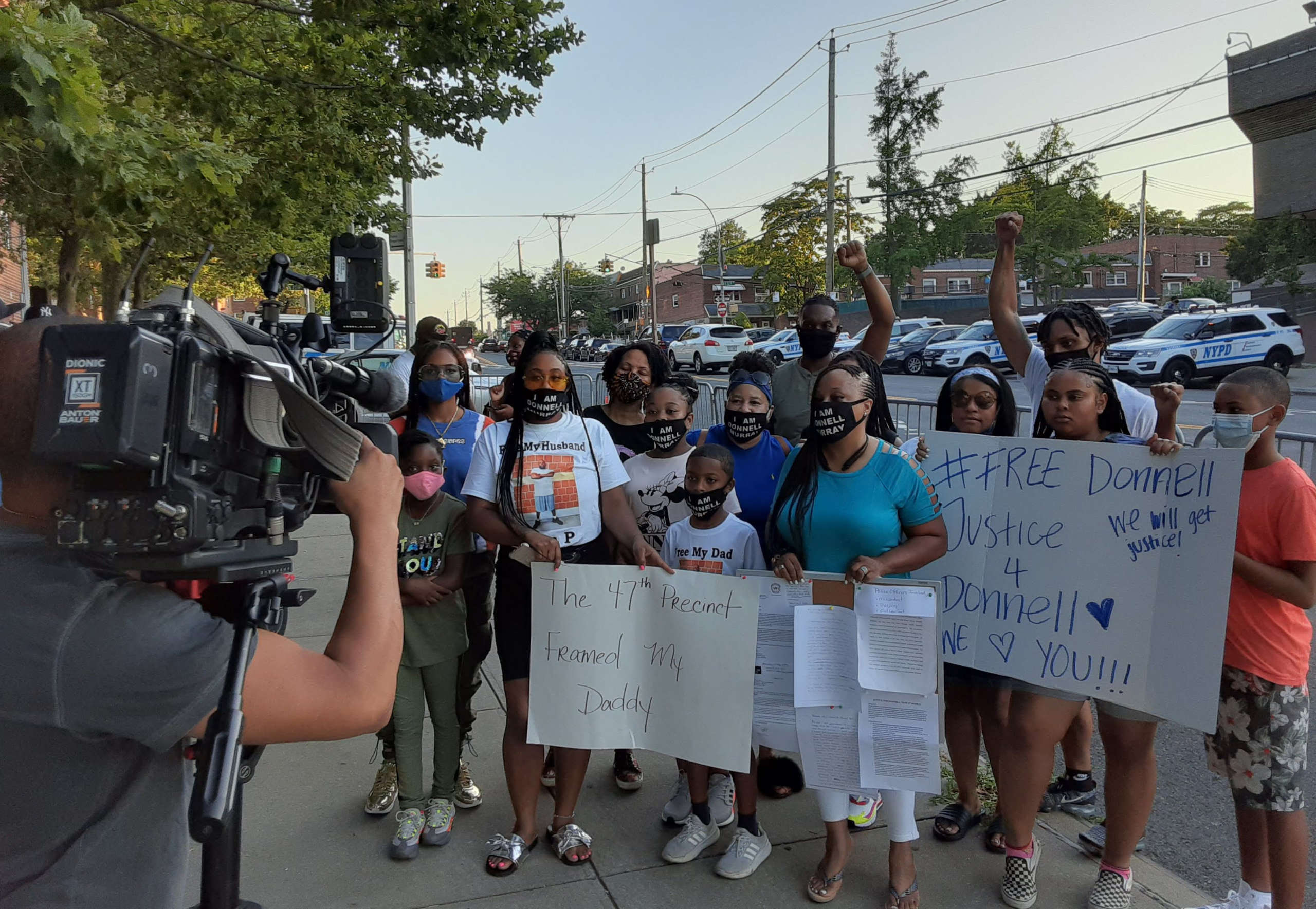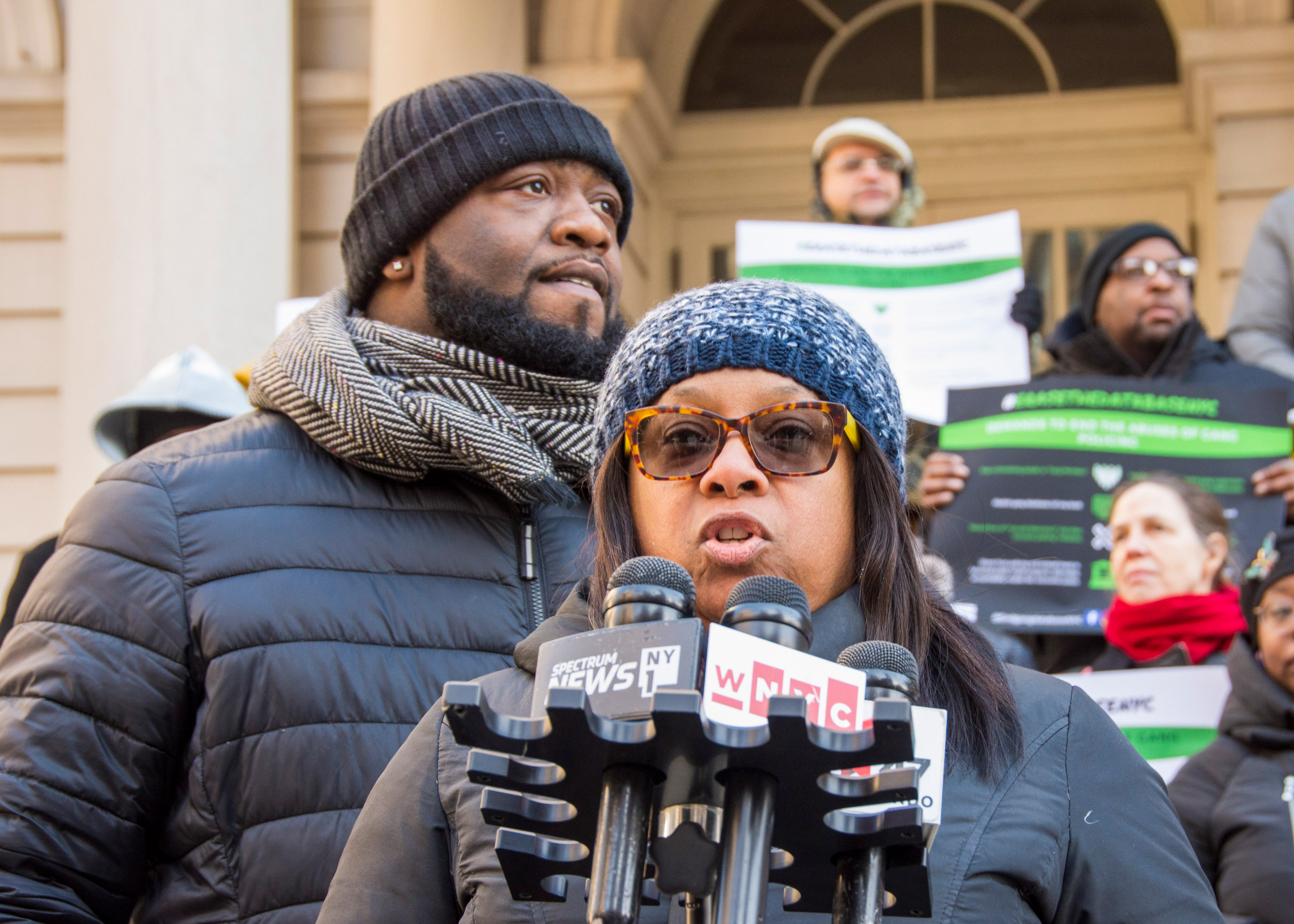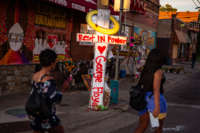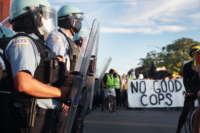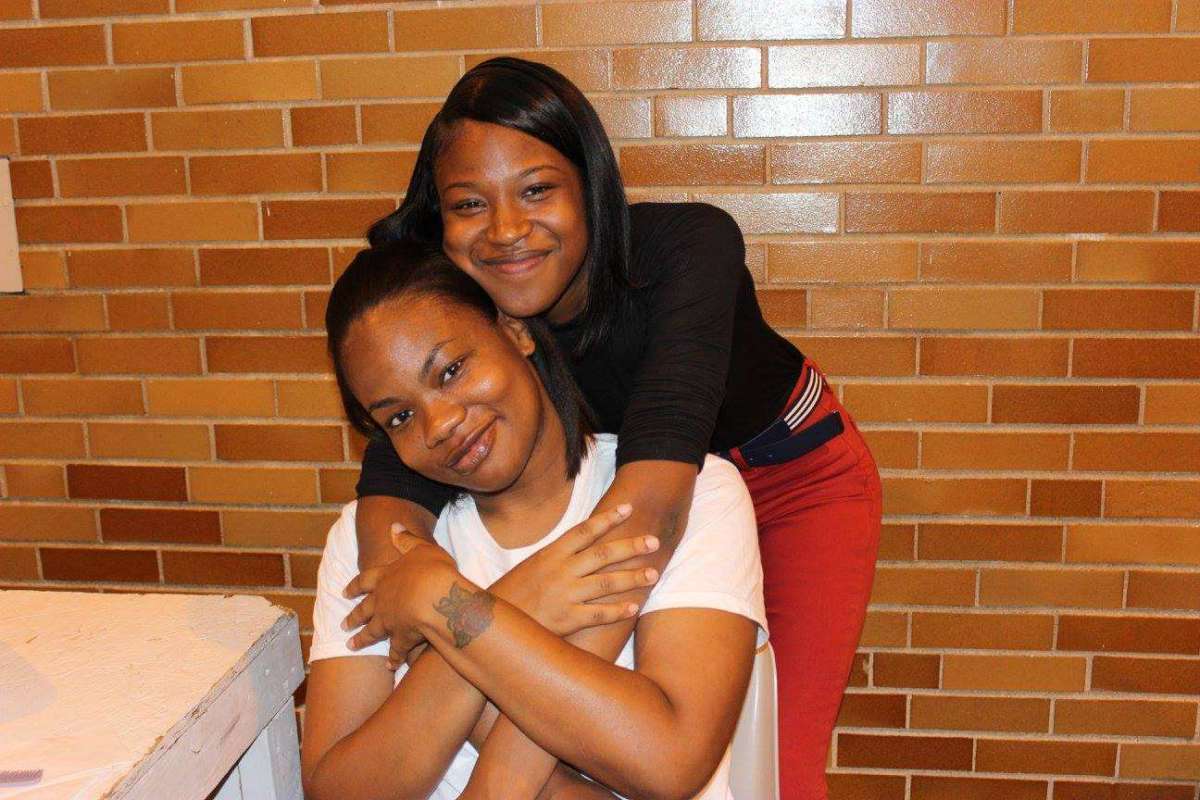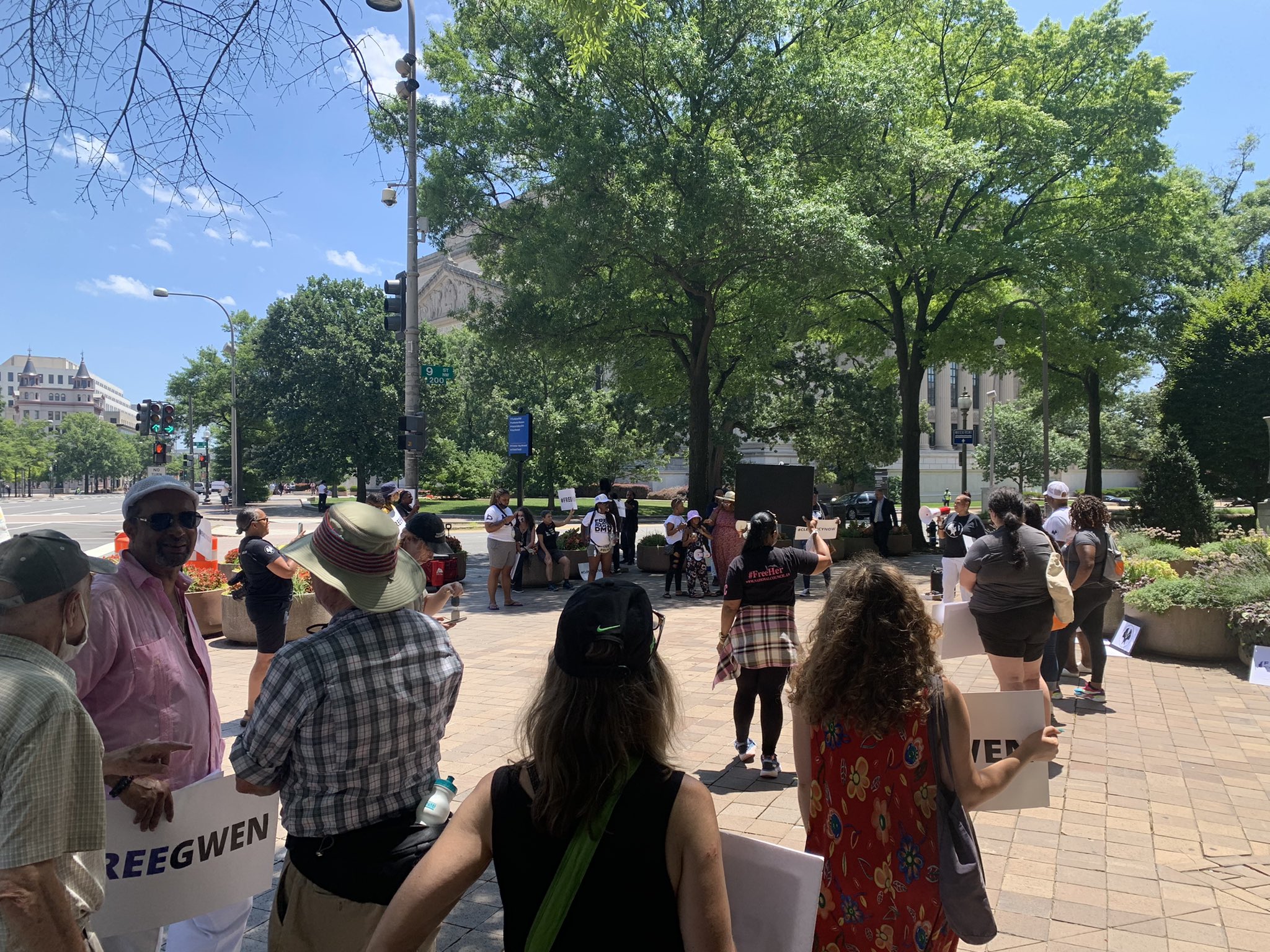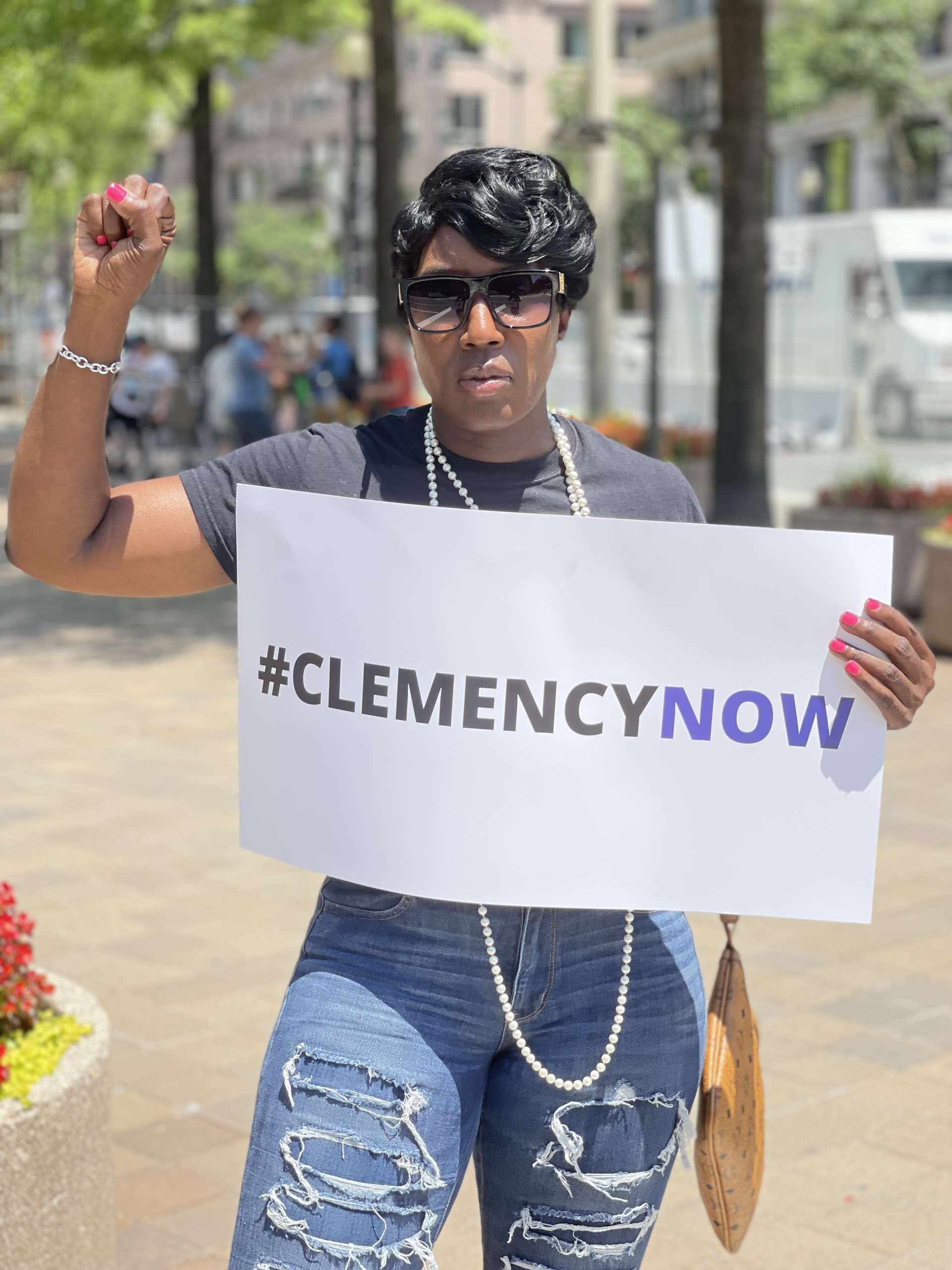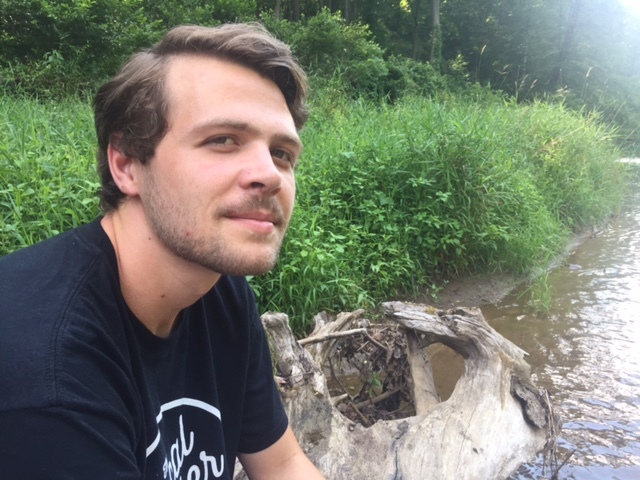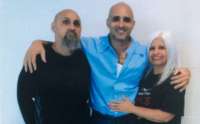
“People end up in prison for a reason, but it’s not the reason that we’re fed by all of these cop shows,” says Victoria Law. In this episode of “Movement Memos,” Kelly Hayes talks with journalist Victoria Law about prisons, why they don’t work, and what even well-meaning people tend to get wrong about incarceration.
Music by Son Monarcas
TRANSCRIPT
Note: This a rush transcript and has been lightly edited for clarity. Copy may not be in its final form.
Kelly Hayes: Welcome to “Movement Memos,” a Truthout podcast about things you should know if you want to change the world. I’m your host, Kelly Hayes. As our regular listeners know, the subject of prison abolition comes up pretty frequently on this show, because, in addition to being a writer and organizer, I am a prison abolitionist. And I know this is a tough topic, for a lot of people, who may agree with me about a whole lot of other things. Because this society presents us with a lot of horrifying problems, and very few solutions. So when we talk about defunding the police, or abolishing prisons, some people feel like we’re talking about taking away the only recourse they have, in a society that subjects them to a lot of harm.
That’s why I think it’s important to, first and foremost, remember that, as Ruthie Gilmore tells us, “Abolition is about presence, not absence.” It’s about demanding and creating structures and supports that would actually allow us to create safety, and prevent harm from happening, rather than grasping for punitive solutions after tragedies have already occurred. But I also think it’s important to get honest about what prisons and policing really are, and how they work. In a recent episode called “You Cannot Divorce Murder From Policing,” I talked with Alex Vitale about the history and current state of policing, and I encourage everyone to check out that episode if they haven’t yet. In today’s episode, I talk with author and journalist Victoria Law about prisons, why they don’t work, and what even well-meaning people tend to get wrong about incarceration. Regardless of how you feel about prisons or prison abolition, I think we all need to reckon with the realities of a system that is devouring millions of people as we speak. Because none of us are exempt from the harms being done or reinforced, and none of us are safe, so long as safety is mythologized on these terms.
[musical interlude]
KH: Today’s guest is Victoria Law. Victoria is a freelance journalist and author whose most recent book “Prisons Make Us Safer”: And 20 Other Myths about Mass Incarceration dispels popular beliefs about prisons, violence, and safety. She is also a Truthout contributor and co-author of the book, Prison by Any Other Name. Victoria Law, welcome to the show.
Victoria Law: Thanks so much for having me Kelly, and thank you so much for all of these issues you cover.
KH: I’m grateful for the chance to have these conversations. So how are you doing today, amid all the things?
VL: I’m doing okay. I mean, in the midst of a pandemic and the twin pandemics of white supremacy and the coronavirus, I am doing as okay as can be. I’m not imprisoned. I don’t have COVID. I think that’s okay.
KH: Well, I am so glad you could be here. Because I really think “Prisons Make Us Safer”: And 20 Other Myths about Mass Incarceration is one of the most important books I’ve read in a really long time, and I’m definitely not alone in that assessment. I know Mariame Kaba has called it an essential read, both for people who are new to this subject, and for those of us who are already organizing against the prison industrial complex. Angela Davis has also called the book “an important tool” that could “enable precisely the kind of understanding we need in this moment.”
I felt similarly about Prison by Any Other Name, which you co-wrote with my dear friend, and Truthout’s editor-in-chief, Maya Schenwar. I’ve heard you say that you think the two books compliment each other, and that you were actually working on them simultaneously. Can you say a bit about how the books serve as complementary resources and who you hope will read them?
VL: Sure. So I see prisons my Prison by Any Other Name, which Maya and I actually envisioned back in 2015 when Obama was president, and we were looking at bipartisan criminal justice reform and the ideas of kinder, gentler forms of surveillance and control, that didn’t necessarily address root causes of imprisonment and still entrenched the idea that prisons or some form of confinement were necessary for some people. We wrote that with the idea that people who already understood that mass incarceration was a problem, that it was a gigantic 2.2 million person problem, and that it needed to be eradicated wouldn’t fall for solutions that simply proposed building different sorts of prisons with the same underlying carceral logics.
“Prisons Make Us Safer”: And 20 Other Myths about Mass Incarceration is geared more towards people who are new to prison issues, might be coming into it especially this past year from movements and mobilizations to defund the police, understanding that policing and prisons are related forms of state violence, but may not necessarily know very much about prisons and thus are susceptible to some of the most pernicious and most pervasive myths about mass incarceration.
And as Maya and I noted frequently in Prison by Any Other Name, if you don’t understand what causes mass incarceration, and you fall for some of these myths that point the finger at some entity that is perhaps a parasite, but not a primary driver of mass incarceration, you’re going to fall for solutions that don’t actually solve underlying causes of harm, violence, or this idea that we need prisons to keep us safer. And instead might fall for the more cosmetic changes that instead entrench prisons in other ways in our lives in our communities.
KH: Well, I can’t stress enough that I hope everyone will pick up both of these books. In the opening of “Prisons Make Us Safer”, you offer up some pretty disturbing numbers. The United States has less than 5 percent of the world’s population, but 25 percent of its prison population. The U.S. had 2.3 million people in cages, as of 2019, and 6.7 million people whose movements were under some form of surveillance or control, such as house arrest, electronic monitoring, parole, or probation. 4.9 million people cycle through our nation’s jails each year, and the majority of those people have not been convicted of a crime. And on any given day, 2.7 million children have a parent in prison.
As I’ve discussed on the show in the past, conditions inside U.S. prisons are so abhorrent, that each year spent in a U.S. prison takes two years off a person’s life expectancy. And with over 2 million people incarcerated, prisons have shortened the overall U.S. life expectancy by almost two years.
So we’re talking about a grotesque system of torture and death-making, and a public health crisis, that most people have been conditioned not to think about. But what I hear most often, when I do confront people with facts or figures about how horrific prison conditions really are, is that people wind up there for a reason. And we’ve been trained by cop shows and popular, punitive ideas about justice and revenge to accept that vague notion of “a reason” as sufficient cause to write off whatever happens to people within those walls. But I really want to take a moment and dig into why we tolerate something so grotesque, that involves so many harms and indignities, that people would otherwise consider outside their values.
As you name in your book, the main arguments in support of incarceration are deterrence, incapacitation, and justice for victims. Can you say just a bit about why these arguments don’t hold up?
VL: Yes. I mean, what we see when we have these three arguments. Well first, I’m going to back up a minute. I want to address your point that people say, “Well, people end up in prison for a reason or for reasons.” And yes they do, but it’s not the reason that we’re fed by all of these cop shows, law and order shows, politicians, and media hype that push for stricter and harsher penalties. People end up in prison because our society does not have a robust safety net. We are a society that is still plagued with racism and white supremacy. With misogyny, transphobia, homophobia, and the unwillingness to provide basic resources to people living in this country. And instead of providing those resources, imprisonment in all of its forms seeks to sweep these problems under the rug and out of public view.
So yes, people end up in prison for a reason. But it is not necessarily a reason of personal responsibility. It is a reason of a collective failure, over decades, and decades, and decades, to provide for people. And it is our societal failure to uproot things like white supremacy and misogyny that this country was actually built on. And instead, strengthen ways in which people can be safe in their homes, among their families, and in their communities. So looking at prisons as either deterrence, incapacitation, or justice for victims feeds into this myth that prisons provide this sense of safety for people.
But if you’re listeners think back to this idea of deterrence, and they think back to their past week and anyone who irritated them or annoyed them when they were going about their daily lives, how often did they respond to that person with violence or harm? If somebody cut you off in traffic, did you get out and punch them in the face? If somebody grabbed the roll of toilet paper that you were looking for or cut you in line at the supermarket, did you respond by slamming your shopping cart into their legs? If somebody cat called you on the street, did you turn around and take your meat cleaver out of your purse and smack them upside the head?
And if you did none of these things, did you refrain from doing this because you were afraid of the threat of arrest and imprisonment? Or did you recognize that this person was irritating, or annoying, or upsetting, and then choose either a different response or no response at all? Not because you are afraid that you might get arrested or you might be facing jail time, but because you recognize that this was actually not a way that you wanted to handle the situation.
And there have been studies that show that people don’t think about prison or prison time when they are committing acts that are illegal, whether they be criminalized acts or acts of harm and violence. If they think about prison, it’s some far away notion that might or might not happen. But very few, if any people are deterred from causing harm and violence because of the threat of imprisonment.
Because if this were the case, given the gigantic number of people behind bars or under some sort of carceral supervision, everybody in the United States should be deterred by this giant looming threat of imprisonment hanging over their heads. And instead, we see that we are not the safest country. There are acts of violence happening on a daily basis. People are not deterred by this threat of arrest and imprisonment, despite all of the law and order shows, the cop shows, the draconian sentences, the increases in policing in urban areas. This has not deterred individuals from engaging in criminalized actions, including harm and violence.
When we think about incapacitation, and justice for victims, we have to remember that according to the Department of Justice’s own findings, over half of violent crimes go unreported each year. So over 50 percent of people who have been harmed by violence do not report it to the legal system. So people are not seeking justice or safety from the system in the first place. And from there, even fewer people are actually arrested. So if you have, say 46 percent of people who have been harmed reporting to the police, fewer people are arrested. And then from there, even fewer are referred to for prosecution, and even fewer are actually convicted and sent to prison.
So prison doesn’t incapacitate people who cause harm and violence by and large. What we’re seeing is that it incapacitates some people who happen to be reported, arrested, prosecuted, and convicted. And then they are sent to prison.
And there, they often are sent into a chaotic, violent, racist, misogynistic, transphobic, and homophobic environment that does nothing to address the root causes of why they harmed somebody else, or why they engaged in violent behavior, or why they had to engage in criminalized behavior if there was not somebody who was directly harmed by their actions.
And again, what we see over, and over, and over is that the criminal legal system does not provide these kinds of resources either to the person who engaged in the harm or to the person who was harmed, who might need a plethora of resources in order to begin to recover, and heal, and rebuild their lives. The criminal legal system is not built to offer, say mental health counseling, or medical care, or help with medical bills, or time off from work so that they can begin to heal. Or childcare, or any other sorts of supports that people need after they have experienced violence and harm.
KH: I know that some people believe that prisons are sites of potential reform. But most of the people I grew up around, and most of the people I encounter in the world, don’t really have any illusions about prisons being sites of reformation. Some of them argue that prisons are a deterrent. But mostly, they believe punishment is a necessary end in itself. I know I walked around for most of my life believing that, because we really are conditioned by this society to conflate satisfaction with justice. And that conflation is a pretty easy con. Most people want to be told that their impulses are correct. And when we are harmed, most of us, reflexively, want some kind of revenge. We don’t like to call it that, so we may dress that impulse up linguistically, in a variety of ways — some of them quite lofty — but fundamentally, it is a completely human impulse to want to see the people who harm us hurt or suffer. It’s understandable. But what this system does, is to tell us, “Yes, you are right to want that. And that if this person does suffer, then justice has been done.”
And that line of thinking really lets the system and the rest of society off the hook. Because if all that really needs to happen for us to arrive at justice is for that person to suffer, we don’t really have to address the inequality that you’ve spoken of, or the cycles of violence, or the lack of healthcare, or the destruction of the social safety net, or the lack of positive socialization or support that so many people are experiencing. Confronting those things would often involve a radical reorientation of the way society works. And the criminal system is about maintaining the norms, order and hierarchy of a grossly unequal society. It’s not about our personal safety, or personal reckonings with injustice. It’s about maintaining our cooperation with the very system that generates the harms we experience.
So rather than saying, “What happened here should be unthinkable, what would we need to change to keep it from happening again?” The system tells us that if the person is punished, we should experience satisfaction and peace, and feel assured that the world is safer. But of course, the system doesn’t really offer that either. It offers the idea of that. Because most people who experience harm, as you say, don’t even bother to engage with the system. And those that do rarely get any satisfaction from that engagement. Can you say a bit about the mythology of justice in the U.S. system and how it compares to how victims and survivors actually experience the system?
VL: Yes. So we have this myth that justice equals retribution. And to paraphrase Mariame Kaba, a long time prison abolitionist and an organizer against gender violence, prison abolition is not about not having consequences. But in our society, we equate punishment with consequences. So people should face consequences for actions that they take, whether they be large or small. I mean, think about how many times, if you live in a household with somebody, you try to hold them accountable for things like, “Hey, you said you were going to do the dishes and you didn’t.” Or, “Hey, please don’t leave your dirty socks all over the living room.” So small actions like this to larger actions like, “Hey, you need to be responsible and there needs to be consequences for the fact that you’ve harmed somebody.”
But because we live in a punitive society and a society that has conditioned us to expect that punishment is a logical consequence, we have this idea that people need to suffer. And they need to be put into places that are, to quote Mariame Kaba, “Somewhere else away from us.” And that these places must be hellholes. If they’re violent, if they’re chaotic, if there are no rehabilitative opportunities, if their relationships with their family members are destroyed, if their communities are devastated by having so many people pulled out, well, that is because of their individual actions. And it lets society off the hook for the large systemic failures of why we have income inequality. Why do women make so much less money than men? Why do people of color make so much less money than white people? Why do women of color make so much less money than their white counterparts? Why do police profile? Why are communities that are often income communities of color that are devastated by violence even further devastated by police violence instead of having money being put into resources that those communities need to address violence and to stop economic, and gender, and racial inequalities?
So prisons obviously don’t solve any of this. Prisons are a solution to punish people for being part of systemic societal failures. And for victims, what this often looks like is if they decide to report to police, if they go to the system in the first place, they have to tell their story over and over to police officers, and later to prosecutors, in a way that is believable and credible. And we have to remember that not every person is seen as a victim. So when Black men are killed, the system takes their deaths less seriously than it does for their white counterparts. We see this also with people who are sexually assaulted, over three quarters of whom do not report to the police in the first place.
And then if the victim’s case goes to court, they are called to testify in front of a grand jury, which is a panel of total strangers who are impassive. And they have to tell their story in a way, again, that is believable to this panel of strangers who hear many, many cases in one day. So by this point, everybody’s mind is just blurred into horror story, after horror story, after horror story. And then if their case goes to trial, they must then tell the story again in a courtroom to a jury in a way that is believable and stands up against any personal attacks on the defense.
And then at the end of this, if the person who harmed them is convicted, they’re able to come to court and give a victim impact statement. But for people who don’t want there to be draconian penalties, I talk about the one mother whose son was accidentally killed. Her 17 year old son was accidentally killed by his friend who was also 17 years old. She did not want her son’s friend to go to prison for a long period of time. But the district attorney and the courts never notified her about the sentencing. She had no opportunity to go and give a victim impact statement that said, “My son is gone. Let us not wreck another 17 year old’s life by sending him away to prison for a long period of time.” But she never had a chance to do that. And she only found out later that her son’s friend got some absurdly long sentence because the jury said, “Okay, you are convicted of murder.” And the judge said, “Okay, here are the sentencing guidelines.” And nobody asked her what she wanted.
Not all victims want the person who harmed them or their loved ones to go away for long periods of time. This is why we often see that family violence, particularly domestic violence and violence against children is underreported, because they don’t want to see their family member or loved one spending long periods of time in some hellish prison. They simply want that person to stop hurting them. And that is not what the current policing in prison system can provide.
KH: I also want to talk a bit about private prisons. In 2019, Maya Schenwar and I co-wrote a piece called The Problem With Child Detention Isn’t That It’s Private. It’s That It Exists. And we got a lot of pushback from people who I think mostly had not read the piece, about how private prisons were a good place to start. And that obviously people insisted, if you removed the profit motive, there would be fewer children imprisoned and better conditions for incarcerated children.
In your book, you wrote the best breakdown I’ve seen of why that’s just not the case, really shattering the myth that we would somehow be rescuing people by ending private prisons. And also, the myth that taking them on is even the best place to start. Could you say a bit about that?
VL: Yes. So what we have to remember is that people are sent to prisons as punishment. And private prisons for the criminal legal system make up 8 to 9 percent of the total prison population. They make up 73 percent of immigration detention, which is a different structure with many of the same similarities of imprisonment — the lack of freedom, the violence, the chaos, the brutality, etc.
But when we’re talking about mass incarceration or immigrant detention, we have to think of private prison corporations as parasites in the same way that we think of the companies that run the telephone systems, or the companies that provide the uniforms, or the companies that sell mass amounts of soap and gruel and whatever else. As parasites that are making money off of mass incarceration. There is a place to make a buck, and they are going to figure out a way to do so.
However, what we have seen is that in places where private prisons are closed, this does not result in people being released. So when Obama’s Justice Department issued a memo towards the end of his presidency stating that they were going to allow their contracts with private prison companies to phase out and they would not renew them, the order did not come with an accompanying memo that said, “And for the X thousands of people who are currently held in private prisons, we’re going to arrange for them to go home.” So they were not going to be released, as a result of private prison closures, they were going to be shuffled into government run prisons, which are just as shoddy, which are just as violent, chaotic, and ill-run. With the only difference being that there was not a giant corporation being paid a fixed amount per body per day for caging them.
We see the same thing in states where some states that have rescinded or stopped using private prisons contracts have not seen a decrease in their prison population. Instead, what they are seeing is they just shuffle people from private prisons to their government run prisons.
Last year, Oklahoma ended its contract with a private prison corporation to close one of its larger private prisons as a cost saving measure. But what they did not do as a cost-saving measure was have a large-scale release of people who were being held in that private prison, or a large-scale release of a corresponding number of people being held in that private prison. Instead, those people were shuffled into the already overcrowded state run prisons in Oklahoma to continue serving their time.
So what we see is that when private prison corporations, or when private prisons are closed, or when divestment strategies happen, private prisons themselves might close, but people inside are not freed. And furthermore, these corporations, which are built to make a buck, simply reshuffle and figure out new ways to profit. So we see groups like GEO Group, which is one of the largest private prison corporations, going into the business of halfway houses. We see them going into drug rehab. We see them buying up electronic monitoring company BI Incorporated to be able to continue their profit. But they are not the drivers of mass incarceration. We have to remember that two of the largest private prison corporations started in the mid 1980s, as prison population started to soar with this war on crime, war on drugs, tough on crime, just say no policies were happening, and states were really enacting harsher and harsher punishments, and corporations saw a way to make a buck.
I think of historian Elizabeth Hinton who talks about how Lyndon B. Johnson introduced both the war on poverty and the war on crime. And the war on crime won out. And that’s why we don’t have all of these structures to eradicate poverty because we’re so busy trying to lock people up.
But if the war on poverty had won out, some of these same corporations might’ve evolved as corporations to make a buck off of efforts to eradicate poverty. So it is not necessarily that they are driving these policies. They may lobby. They may give political donations. But we also have to remember that the majority of prisons are government run prisons with government workers, who are in unions, who have a lot more political power, a lot more clout, donate far more money to political candidates, and offer to provide votes for these political candidates as well.
So private prison corporations are this sort of parasite that if we focus all of our attention on getting rid of them, we still don’t solve the problem of mass incarceration. We get rid of a parasite. Great. You don’t get to feed off of caging X number of people, whatever 9 percent of 2.2 million is. But this doesn’t mean that people get to go home at the end of the day. And people should remember that.
KH: Another misconception you address in your book is the idea that prison slavery drives mass incarceration. You write that fewer than half of the 2.3 million people who are locked up in the U.S. work while they’re incarcerated, and less than 1 percent of those people work for private corporations. So why does the myth that slave labor is a driving force behind the prison system persist?
VL: I think we see this as a holdover from the 13th Amendment, which abolished chattel slavery in southern slave holding states with the exception of somebody who was convicted of a crime. And in the South, lawmakers seized on this exception. Law enforcers seized on this exception to be able to basically re-enslave the newly freed Black population and send them back to work in fields, in mines, in other types of hard, grueling labor. But it was a way to deprive them of their freedom once again.
Fast forward to the 1980s, and 1990s, and 2000s, and even today. We have large numbers of people who are in prison who remain idle. If prisons were about profit, every one of those 2.2 million people in prison would be put to work doing something. Instead, we have something like between 80,000 to 100,000 people in solitary confinement, which means that they are locked into their cells 23 and a half to 24 hours a day with absolutely nothing to do.
For example in Texas, there are large numbers of people in what’s called administrative segregation, which is their fancy term for being locked in your cell 23 and a half to 24 hours a day. They are not being put to work in the fields, where Texas prisoners are often required to work, and plant food, and harvest food for people inside the prison. They are not being put to work in the braille industry where the Texas Department of Criminal Justice contracts with these textbook companies to translate books into braille. And people in prison are not being paid for this, but TDCJ is.
But if profit was the sole motivation, then you would not have well-educated people who are probably going to be very good at translating books into braille languishing in solitary confinement, or languishing in places where they are idle and unable to work.
Instead, what we see is work is often used as a control mechanism. It is a control mechanism if somebody has a job that pays them a better wage and allows them to buy some things. And we also see it as a way for prisons to offset their own costs. So if you have people, imprisoned people mopping the floors, scrubbing the toilets, cutting other people’s hair, running errands for the prison warden, working in these fields, that is work that you do not have to pay an outside person whatever the minimum wage is in the state or county that you were in to do, but it does not necessarily offset the gigantic costs of 25,000, 30,000, 45,000, $55,000 per prisoner per year that the state incurs. So it is not an offset.
I mean, in the outside world, saying that we would spend $55,000 for somebody to sit in their house all day, everybody would decry this as welfare queen, welfare, lazy, something, something, something. We would say no, you cannot pay $55,000 for a person to sit in their house and do nothing.
But we do this all the time with imprisonment. We see that very few people are employed. Even fewer are employed by private prison corporations. And instead, prison systems spend an enormous amount of money keeping hundreds of thousands of people just sitting all day doing absolutely nothing.
KH: I want to talk a bit about sex offender registries. In your book, you take on the myth that sex offender registries are necessary to keep children safe. I feel like this is a tough one for a lot of people, because the desire to hang on to these registries comes from a very emotional place. Parents and other people who love children are afraid for the young people in their lives, and many don’t want to give up anything that they think could offer even the smallest chance of insulating young people from violence. We also have a lot of contempt in our society for people convicted of anything construed of as a sex crime. And I think that’s both the product of personal pain and resentment, sometimes stemming from our own experiences, and also from the collective pain and trauma that some cases have instilled in us as a society — which is why these laws are often named after victims, who we would like to believe these laws would have saved. Those feelings are reinforced by cop shows like Law and Order SVU that position police and prisons as our best protection against monstrously depraved people, who are depicted as lurking around every corner.
But one in four girls and at least one in six boys are sexually abused in the U.S. before their 18th birthday, as you wrote in your book. And prisons and sex offender registries are not protecting children from those outcomes. Can you say a bit about these registries and how they actually function, and why they don’t keep us safe?
VL: Sure. So we have to remember that sex offender registries like arrest and like prosecution and imprisonment come after harm has occurred, and only come if the harm is reported. So we have to remember that this statistic that you just read, one in four girls and one in six boys nationally are sexually abused before their 18th birthday. And of those, very few report to the authorities that this has happened. We have to also remember that 93 percent of child sexual abuse happens at the hands of family members or acquaintances, not strangers. So we are fed this idea that sex offender registries deal with the stranger in a white van who’s going to pop out of their van, and grab your kid, and do who knows what with your child. And in reality, child sexual abuse is more likely to happen at the hands of a family member, a community member, a trusted person, or an acquaintance.
And we also have to remember that child sexual abuse has a very low percentage of reporting. So of every 100 incidents of child sexual abuse, only 10 to 18 instances are reported to the authorities. And from there, the number gets significantly and terrifyingly lower. If we think that police, and prisons, and sex offender registries keep children safe. Of those 10 to 18, only six people who have committed harm go to trial. And only three are convicted. And they are convicted of something, not necessarily of hurting a child or children. But they might plead guilty to something else in order to avoid being labeled a sex offender.
So A, the sex offender registry does nothing to prevent sexual harm and sexual abuse, because it happens after the fact. Also policing and prisons do not keep children safe, because it happens after the fact. But what this does do is it vilifies people who harm children as depraved monsters. And it makes it harder for us to identify and recognize people who are exhibiting warning signs as people we should perhaps look out for.
So nobody wants to think that their grandfather, or their great uncle, or their aunt, or their cousin, or their neighbor, or their little league coach, or their music teacher or whoever, or their brother or their sister might be somebody who will harm children. Because in our minds, people who harm children are these depraved monsters. And they must have horns, and goblin fangs, and something else. And they could never be the beloved people in our community.
And when we fail to recognize these warning signs, we fail to act to prevent them. So what are the warning signs that could have prevented this from escalating in the first place? So similarly, what are the warning signs if you see somebody that is behaving in a way that leads you to believe that they may not be safe to be around children?
So when we fail to recognize these warning signs, we fail to do things that could either support that person in getting help before they harm somebody or before they continue to harm somebody. And instead, what we do is we turn a blind eye and we’re like, “That’s Desmond. Desmond is great. He might be kind of weird, but I know that I’ve known him since we were both six years old. And I know that he would never harm anybody.” As opposed to saying, “Hey Desmond’s, let’s talk. Let’s try to figure this out. Let’s look for resources together.” And it also keeps people who are in criminalization, keeps people who are struggling with impulses or ideas about hurting children from voluntarily seeking help, because they are afraid of being criminalized, locked up, and put on the sex offender registry.
In addition, people are put on the sex offender registry with no way to get off and no support to help keep them from hurting somebody else again. Instead you’re given a long list of what you cannot do. You cannot live near a school. You cannot live near a daycare. You cannot live with your sister, because she’s got three minor children. You cannot get a job here because you might be violating X, Y, or Z. You cannot live in this place because it is near school, daycare, children. You might have to be cut off from what little support system you might still have that might be able to hold you if you feel like you are struggling.
And there have been numerous studies that show that people who commit child sexual abuse are more likely to commit violence again when they’re without their support system, when they are stressed, when they’re feeling isolated, than when they are in a system that tries to hold them responsible and accountable, however imperfectly that might be. And I say however imperfectly, because what we know again, and again, and again, is that the creation of the sex offender registry has not resulted in larger numbers of children being safe. We have more than 900,000 people on the National Sex Offender Registry right now. That is a number that is greater than the entire population of Vermont. Yet we are not seeing an increase in safety for children. The creation of the sex offender registry did not stop Larry Nassar, the doctor who was arrested and imprisoned for sexually assaulting numerous child gymnast throughout his career, from doing what he did.
It did not allow anybody to recognize that this nice doctor that treated so many gymnasts might have a problem and might require intervention. Instead, what happened is that countless young people were subjected to child sexual abuse at his hands were afraid to come out and say something about him. Or if they did, their complaints were not taken seriously because he did not fit this idea that people who harm children are depraved monsters, and somehow we can spot them a mile away.
KH: I absolutely agree, and I also want to name that these registries, of course, reach far beyond the bounds of child sexual abuse, and beyond crimes like rape. As many people know by now, there are states where people can wind up on these registries for things like public urination, or taking a naked photo of yourself, if you’re a teenager, or even being a client of a sex worker, and I want to acknowledge that there are people whose lives are being destroyed by these registries over those things too. Because when we create mechanisms of surveillance and control like this, their reach will always creep outward, and ensnare people who are not the supposed targets of the legislation. But, to avoid falling into a reform trap, where people think we just need to tweak who gets registered, it’s really crucial to name, as Victoria has here, that even in cases where people have committed acts of sexual harm that deeply disturb us, these registries are not preventing those harms from happening and they are not making anyone safer. They really do cause nothing but harm.
I want to circle back, for a moment, to Prison by Any Other Name, and the sort of creeping extensions of the carceral system that we are witnessing. Because people often think of incarceration, and that kind of surveillance and control as happening somewhere far away, or, at least, removed from their existence. But as you and Maya Schenwar wrote in Prison by Any Other Name, the prison nation really is extending into so many areas of our lives. As society fails more and more of us, it becomes increasingly important for the system to depict us as failures, who have to be surveilled, punished and controlled, because it can’t be society that has to change. It has to be us, who are lacking and failing, and need to be whipped into a better state of cooperation with it. So we see escalations of the carceral management of people, in schools, at work, in healthcare, and in family regulation systems, like DCFS [Department of Children and Family Services]. And, of course, we also see the outsourcing of incarceration into people’s homes. Can you say a bit about how the prison industrial complex is presently extending its reach?
VL: Yes. I mean, what we see is we see the prison industrial complex creeping into our lives in several different ways. First, we see the expansion of prison-like solutions often posited as alternatives to incarceration.
One of the most popular is electronic monitoring, which is when somebody is shackled with a global positioning system device, or a GPS device, which tracks their every movement. And electronic monitoring is almost always accompanied by home confinement, which means you are locked in your house. Well you’re not physically locked. You are told to say in your house. And if you want to leave your house, you must have prior approval from the authorities. That authority can be the Sheriff’s office, the electronic monitoring company, a probation officer, a parole officer. The authority varies, but the result is the same. If you walk out of your house, even in an emergency, without that prior approval, you can be sent back to prison. And electronic monitoring is one of the growing ways in which imprisonment has been extended into our homes and communities. It is seen as a kinder, gentler form of imprisonment. And many people say, “Yes, I would rather be sleeping in my own bed, eating food from my own refrigerator. Not having to get up five times a night to recite my prison ID number whenever the guard demands that I do so.” But it is still a form of imprisonment. And as a solution to the physical jails and prisons, we need to be careful not to create similar structures in our homes and communities.
What we also see is this creep of criminalization into other institutions that are not meant to be prisons, but start looking remarkably like prisons. We see this with schools, particularly schools that serve low income students of color. So we don’t see this in the Waldorf and the Montessori schools. We don’t see this in the schools in the wealthier, whiter suburbs of, name the city of your choice. What we see this is in the schools that are often Black, brown, and immigrant, where the students and the families are from lower income brackets, and do not necessarily have the resources and the wherewithal to go someplace else. And we see these schools criminalizing students from an early age. We see these schools having more police officers than school counselors. We see students being brutalized and punished for acts that two decades ago would just be dealt with by the school. So we see that students are being arrested and put in handcuffs for things like having a fistfight. In some instances, which occur more frequently than anyone can imagine, we see that young Black girls as young as five or six get put in handcuffs by school police officers for things like having a tantrum because they don’t want to take a nap, or they don’t want to stop coloring, or whatever the case is.
Listeners who have small children in their lives, whether it be their own children, or their loved one’s children, or their neighbors’ children will know that four, five, and six year olds sometimes throw tantrums. And no parenting book in the world says the way that you respond to a small child that does not want to do something and is throwing a tantrum, is to bring in a large law enforcement officer who will then put handcuffs on this child and terrorize them, and handcuff them to a desk, or put them in the back of a police car, or do something else that will cause them much, much more trauma.
Now that is not actually the way to deal with children, ever. But that is what we see with this creep of criminalization into institutions like schools, like preschools, like child welfare systems or foster care systems. So we see this idea that people should be treated as if they have somehow committed wrongdoing. Yes, tantrums are annoying. But they are not criminalized actions and they should not be punished in that kind of brutal way. And we see people being punished, sometimes brutally, for acts that a few decades ago, we would have said, “Okay, clean up your crayons. Okay, you don’t get to participate in sing-along because you broke all the crayons and threw a tantrum, and it took us 20 minutes to have to deal with you. So we’re not going to allow you to do this. Or we’re going to talk to your parents about that.” But we do not respond with brutal physical punishment, or we should not. And we are seeing in an increasing number of instances this idea of punishment, carcerality creeping into our systems.
KH: I just want to say that as someone who has experienced that carcerality, in the mental healthcare system, and in other systems that were supposed to be offering me assistance when I was younger, I felt really seen reading Prison by Any Other Name. And I think a lot of people who have had these experiences will feel the same when reading this book. Because what’s positioned as “help” is often a form of punishment, and the blame aspect is important, because the system has to depict people as failing to correctly participate in something that fundamentally works, in order to maintain itself, and to avoid having to make any correction. Society didn’t fail that person, we’re told. They failed at participating in society, and they need to be disciplined into getting it right. And given what’s happened to wages over the last 30 years, and what’s happening to the environment, health care, and just all of the ways this society sabotages people, we have to confront the reality that people aren’t failing at something that works, and they don’t need to be managed and punished and treated harshly, in order to do better. Abusing people further won’t magically give them a functioning role in this slow motion collapse we’re experiencing, this thing Ruthie Gilmore calls “organized abandonment.” Punitive responses won’t save people, and allowing them to be enacted on others will not save the rest of us.
So I highly recommend that people read Prison by Any Other Name, and really challenge themselves to recognize how easily most of us could be ensnared by one of these tentacles of the prison nation.
But all of these things said, I think a lot of people, when confronted with the realities of the prison system, are at something of a loss. Because while police and prisons are about the maintenance of order within the system, they also help us order the world in our minds. In the absence of them, a lot of people don’t know where to begin. I know this isn’t a question any one person can answer for the rest of us, and that there are many potential answers and experiments under construction, but what would you say to people who are listening and find themselves agreeing in principle, but who can’t really picture another way?
VL: I think first of all, they should think back to their own interactions. In their families, in their communities about how they deal with harm and violence. So most of us when confronted with harm done to us by people that we love or care about, or maybe even people that we don’t like and don’t care about but are in our communities, often do not go to the police as a first step. Again, as I mentioned earlier, over half of violent crimes are not reported to the police each year. So we are already not going to the police and to the prison system to resolve our conflicts, including conflicts that are involving violence.
So A, we need to think about ways in which we have dealt with harm and violence in our own lives. And some of that might be, “I wish I had responded differently.” Not necessarily, “Oh, I have this magical solution.” But it’s also thinking about what else can be done. One of the insidious things about policing in prisons and this reliance on policing in prisons is it has shrunk our imagination so that we do not think that we individually or collectively can deal with conflict or harm on our own. And instead, we have to outsource it to this violent institution that takes up more and more of our resources.
So I would say, first of all, look at some of the experiments, initiatives, and projects that have been happening. Some of them are relatively new that have come up in the past year or two. Some of them have been long-standing initiatives. In the back of my book, I list several places where people can go to start looking for blueprints and roadmaps on how to address harm without calling the police. We have to understand it is not a one-to-one solution. We do not take out everybody who is convicted of X and then put in a similar sized one-size-fits-all solution. So if 55 percent of people have been incarcerated for violence, we don’t take out prison as the solution and then put in something else that is as giant and mammoth, and does not address everyone’s needs. But what we can do is we can say what have other people done in these situations?
One of the things that I’ve turned to is the idea of pod-mapping, which was started by the Bay Area Transformative Justice Collective, which seeks to end child sexual abuse. And Mia Mingus, one of the co-founders and a long-term abolitionist, put it this way, is that abolition and accountability are a muscle you have to continue to practice or exercise. She gave some sports examples that I don’t really remember because I don’t follow sports. But she said such and such basketball player did not magically one day just start shooting baskets into a hoop all the time. He had to practice, and practice, and practice. And that’s something that we have to do with abolition.
So they have an idea, this thing called pod-mapping, where you map out relationships that you have with people. Who can you turn to when you need help? And these can be different people for different roles. Maybe if you are in need of $10, you can take a taxi to the hospital or to urgent care. Or you need $10 for groceries. Who can you turn to? It might be neighbor X, neighbor Y, and neighbor Z.
Who can you turn to if you have been harmed by somebody? That might be best friend A, best friend B, best friend C. But those best friends may never, ever have 10 extra dollars to be able to lend you. Whereas your neighbors might say, “I’m really busy, or I don’t have the wherewithal, or I don’t have the skills to be able to support you if you have been hurt by violence.”
Now, who can you turn to when you are the one that has committed harm? Because we have to be honest with ourselves in that we also cause harm to other people. It might not be forever lasting, traumatizing, violent harm, but we also harm other people in our day-to-day lives because we are humans. And who do we have in our lives who might say, “Hey Vicky, that was a messed up thing that you did. What are you going to do about it?”
And that person might be a community member M, community member, and community member O. But those people may not be there for you when you need $10. They might not be able to provide childcare. They might not be able to do other things.
So it’s important to think about what your relationships are to other people, and who might be able to help. And also, where you are in relationship to other people. So you might say, “Neighbors, A, B, and C that can lend me $10. I don’t ever have $10 to lend back, but I’m home on Tuesday afternoons, and their kids can come over to my place and have a safe place to go.” Or, “I can be here if they need help during X, Y, or Z times, because I am home during this time, and I can be the person that helps them with this.” So I think it’s building relationships, and building supports, and being able to envision before a crisis happens what are the relationships, and then strengthening those relationships as well.
There’s also a website called One Million Experiments that Mariame Kaba has put together that looks at ways in which people are experimenting with responses to harm and violence that do not involve calling the police. There’s also a gigantic 400 page toolkit called Creative Interventions, which is also available online that chronicles people’s stories and experiences dealing with harm, violence, and conflict without calling the police. These are not manuals. They’re not like your stereo manual or the manual to put together your Ikea shelf in which you follow A, B, and C to the letter and voila, you have a shelf or you have a stereo system.
But there are ways in which we should and can stretch our imaginations to say, “What else is possible when something happens?” Instead of saying, “Well, I can either call the police or I can do nothing,” which are currently what larger society tells us are our only two options.
KH: Thank you for that. Are there any asks or final thoughts you would like to leave our listeners with today?
VL: I would quote Ruth Wilson Gilmore, who is a co-founder of Critical Resistance and a long-term prison abolitionist who says that abolition is not aspirational. It’s a journey. And we’re practicing abolition every day and in many different forms. This is actually a paraphrasing, not a quote. And she points out that fair wages are a form of abolition. She points out that migrant justice is a form of abolition. There’s so many different ways in which we can work towards abolition. Because we have to remember that abolition is not just the tearing down of prisons in all of its manifestations, but also replacing them with resources and supports that actually meet people’s needs and effectively addresses and reduces harm and violence, therefore making prisons unnecessary and obsolete.
KH: Absolutely. And we will be including links to some of the resources that Victoria mentioned in the show notes, which you can find at the bottom of the transcript of this episode on our website at truthout.org. And, I just want to say, as someone who reads a lot about prisons, I really learned so much from your book, Victoria. And I really hope that all of our listeners will check out “Prisons Make Us Safer”: And 20 Other Myths about Mass Incarceration and also Prison by Any Other Name, because I really believe that if a critical mass of people really took the time to process these texts, we might find ourselves living in a different world. And both are available as audiobooks, by the way, since I know that’s important to some people — including me. So don’t forget to look for those links in the show notes.
Victoria, I want to thank you so much for joining me today. This has been a great conversation.
VL: Thank you so much, Kelly.
KH: I also want to thank our listeners for joining us today. And remember, our best defense against cynicism is to do good and to remember that the good we do matters. Until next time. I’ll see you in the streets.
Show Notes:
Victoria’s books:
“Prisons Make Us Safer”: And 20 Other Myths about Mass Incarceration by Victoria Law
Prison by Any Other Name by Victoria Law and Maya Schenwar
Further reading:
Many So-Called “Alternatives” to Mass Incarceration Are 21st-Century Shackles by Vincent Schiraldi, James Kilgore and Victoria Law
The Problem With Child Detention Isn’t That It’s Private. It’s That It Exists. by Kelly Hayes and Maya Schenwar
Is Prison Necessary? Ruth Wilson Gilmore Might Change Your Mind by Rachel Kushner
Resources:
One Million Experiments is a place to explore snapshots of community-based safety strategies that expand our ideas about what keeps us safe.
The Creative Interventions Toolkit is an extensive resource that promotes community-based approaches to ending interpersonal violence.
You can learn about podmapping by visiting The Bay Area Transformative Justice Collective’s website. BATJC is a community group based out of Oakland, CA working to build and support transformative justice responses to child sexual abuse.
This post was originally published on Latest – Truthout.




